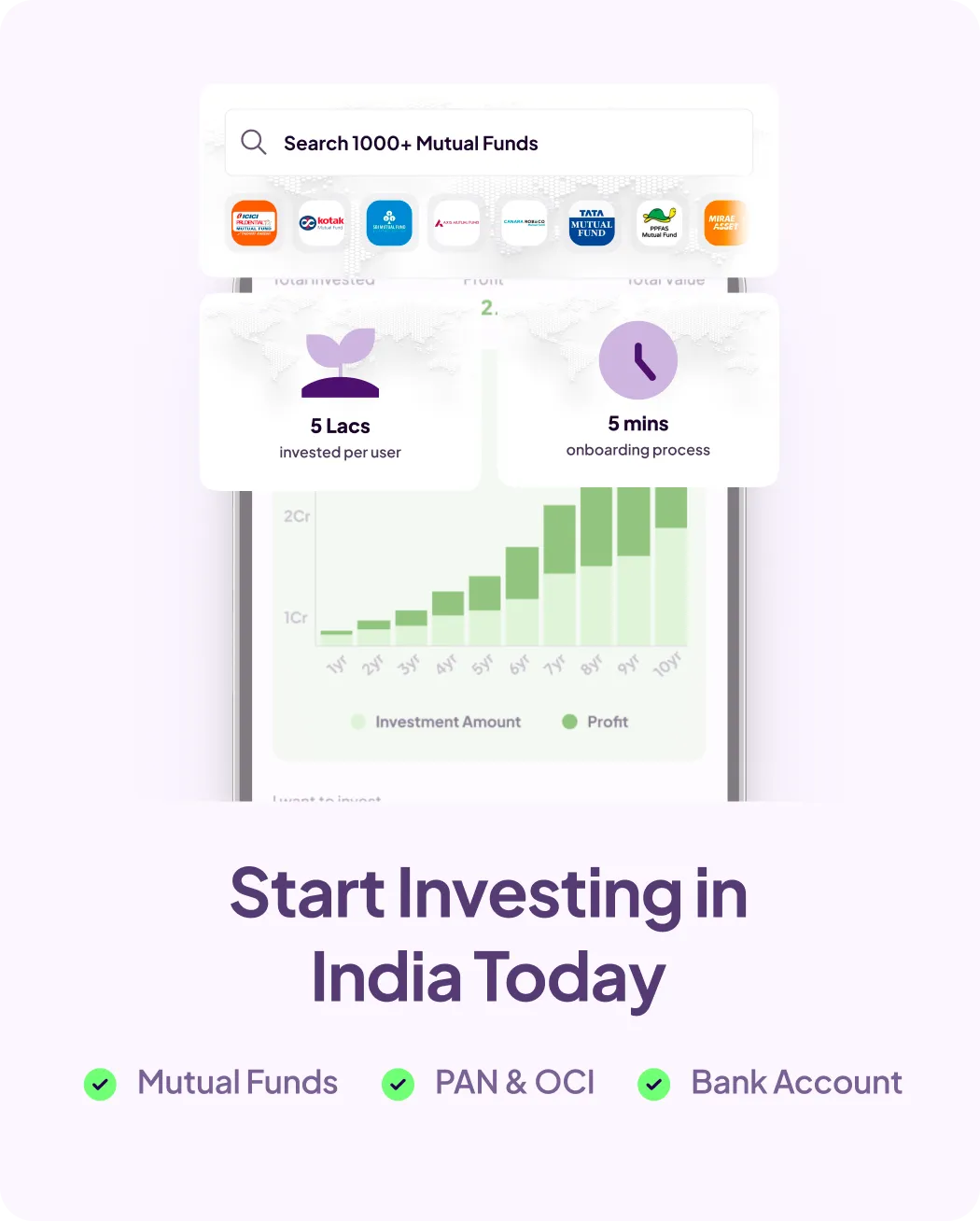Gold investments have brought returns of almost 30% remarkable returns of nearly 30% in the last year. This makes the choice between gold ETF vs gold mutual fund more significant than ever. Investors want to make the most of this momentum.
Both investment vehicles give you exposure to gold but work differently. Gold ETFs let you trade up-to-the-minute like stocks. Their expense ratios stay between 0.5% to 1%. Gold mutual funds are more welcoming to beginners. They allow SIPs starting as low as ₹500. The expense ratios are slightly higher at 1% to 2%.
This detailed guide gets into the main differences between gold ETFs and gold mutual funds. You will learn about their performance, costs, and features. This knowledge will help you make a smart investment decision in 2025.
Understanding Gold ETFs and Mutual Funds in 2025
Exchange-traded funds (ETFs) are leading the way in 2025's gold investment world by giving investors direct access to physical gold prices. Each ETF unit equals one gram of 99.5% pure gold. These units track gold market values transparently with expense ratios ranging from 0.5% to 1%.
What makes gold ETFs unique in today's market
Gold ETFs have become increasingly popular, with global inflows hitting 63 tons from June through December 2024. These funds track physical gold prices through bullion or futures contracts and let investors trade on stock exchanges in real time. ETFs also remove the hassles of storage and security risks that come with owning physical gold.
How gold mutual funds work in the modern economy
We invested most mutual fund assets in gold ETFs and other gold-related investments. These funds combine investor money to buy various gold securities, including gold mining stocks and derivatives. They give investors flexibility through Systematic Investment Plans (SIPs) that start at just ₹500, making them available to more investors.
Key structural differences between both instruments
The main differences between these investment options show up in their structure and how you can buy them:
- Trading Mechanism: Gold ETFs need a demat account and trade like stocks. Mutual funds work through fund houses without demat requirements
- Management Style: ETFs use passive management with lower expense ratios. Mutual funds use active management and cost between 0.6% to 1.2%
- Investment Approach: ETFs link directly to gold prices, so mutual funds spread risk through various gold-related instruments
Comparing Performance and Returns
Gold ETFs have delivered an average return of 21.94% in the last year.
Historical returns analysis (2020-2025)
LIC MF Gold ETF stands out as the top performer with 22.19% returns. UTI Gold ETF follows with 22.11% returns. Gold mutual funds have shown strong results too, with average returns of 21.30%. UTI Gold ETF Fund of Fund leads this category by delivering 21.80% returns.
Expense ratio's effect on long-term returns
Expense ratios play a crucial role in your investment results. Gold ETFs keep costs lower because of passive management. Here are some key performance highlights:
- High net worth investors saw their portfolios improve by 84% through gold ETF investments
- Gold ETF expense ratios stay between 0.5-1%, while mutual funds charge higher management fees
- ETFs' cost advantage helps long-term returns, as shown by their steady outperformance
Digital Gold Investment Platforms
Digital gold platforms now serve as advanced marketplaces where users can trade gold electronically. Investors can buy gold in small portions, starting with amounts as small as ₹1.
Modern trading platforms comparison
Today's trading interfaces let you track prices live and execute trades instantly. These platforms show clear pricing and market data that give investors the ability to make better decisions. Yes, it is worth noting that over 75% of investors under 35 choose digital platforms for their gold investments.
Technology integration benefits
Strong encryption technologies and secure protocols protect digital gold holdings. These platforms also provide:
- Live price charts and market analysis
- Quick buying and selling options
- Secure vault storage with insurance coverage
- Portfolio tracking and performance metrics
Digital investment convenience factors
Digital platforms have broken down the old barriers to gold investment. High-income investors buy larger amounts, while middle-income groups value the flexibility to purchase smaller units. 70% of investors view gold as a safe asset, and digital platforms make it available through features like fractional ownership and quick liquidity. Users get guaranteed 24K gold purity and insured storage, which eliminates concerns about authenticity and security.
Cost and Tax Implications
Cost structure plays a vital role when choosing between gold ETFs and mutual funds. The expense ratio for gold ETFs ranges from 0.5% to 1%. These rates are nowhere near gold mutual fund charges that run between 0.6% to 1.2% each year.
Tax treatment of gold ETFs vs mutual funds
The 2024 budget brought the most important changes to taxation. Investments held over 24 months now enjoy a reduced long-term capital gains tax rate of 12.5%. Investors pay taxes based on their income tax slab for gains made within 24 months.
Hidden costs and charges to think about
The simple expense structure tells only part of the story. Smart investors should watch out for:
- Mutual funds charge 1-2% exit loads on redemption within a year
- ETF investments need Demat account charges
- ETF creation and redemption fees add up
- ETF gold holdings incur storage and administrative costs
ETFs show tracking errors because gold sales cover administrative expenses regularly. These costs can affect ETF's pricing separate from gold's market value if not managed well.
Making the Right Investment Choice
Financial advisors recommend putting 5-10% of investment portfolios in gold. Your investment choice should align with your financial goals and risk tolerance.
Investment preference
Gold ETFs are perfect for investors who want direct exposure to gold prices and active trading. These instruments work best for those who already have demat accounts and want lower expense ratios. As with gold mutual funds, they attract investors who prefer professional management and systematic investment options through SIPs.
Investment horizon considerations
Gold's historical value preservation benefits long-term investors, as showed by its 7.98% average returns annually between 1971 and 2024. Gold mutual funds are a great way to get systematic wealth building through SIP options that start at ₹500. These funds work well for investors who seek disciplined, long-term investment approaches.
Platform and accessibility factors
The choice between ETFs and mutual funds depends on:
- Demat Account: ETFs just need active demat accounts, while mutual funds don't have this requirement
- Investment Amount: ETFs just need one-unit minimum investments (1 gram gold equivalent), mutual funds accept smaller SIP amounts
- Management Style: ETFs provide passive management with live trading, unlike mutual funds that offer professional active management
Your investment style determines the best choice - ETFs work for active traders while mutual funds suit systematic investors. Portfolio managers suggest you think over gold as a strategic component, especially to hedge against market volatility.
Conclusion
Gold investments continue to be a powerful way to diversify portfolios. ETFs and mutual funds each offer distinct benefits that appeal to different types of investors. ETFs excel with their immediate trading features and lower expense ratios of 0.5% to 1%. Active traders who want direct exposure to gold prices often find ETFs particularly attractive.
Systematic investors can benefit from gold mutual funds' SIP options, which start at ₹500. These funds come with expense ratios between 1% to 2%. Professional management is a key advantage, and investors don't need demat accounts.
Several factors should guide your decision between these investment options. Your trading style, investment amount flexibility, and management preferences play crucial roles. Stock market-savvy investors typically gravitate toward ETFs. Mutual funds are better suited to investors who value structured, professional management.
Gold's track record speaks for itself, with average annual returns of 7.98% since 1971. This performance reinforces gold's importance as a portfolio asset. A 5-10% allocation to gold, through either ETFs or mutual funds, can shield your investments from market volatility and create opportunities for significant returns.
Frequently Asked Questions: Gold ETFs and Mutual Funds
Q1. Which is better for investing in gold: ETFs or mutual funds?
Both have their advantages. Gold ETFs offer lower expense ratios (0.5-1%) and real-time trading, making them suitable for active investors with demat accounts. Gold mutual funds provide professional management and allow systematic investments (SIPs) starting from ₹500, appealing to long-term investors who prefer a more hands-off approach.
Q2. What has been the historical performance of gold investments?
Gold has shown strong long-term performance. Between 1971 and March 2024, gold investments generated average annual returns of 7.98%. During periods of market volatility, such as the COVID-19 pandemic, gold investments have demonstrated resilience, with some ETFs rising over 25%.
Q3. How are gold ETFs and mutual funds taxed?
For investments held over 24 months, the long-term capital gains tax rate is 12.5%. Gains realized within 24 months are taxed according to the investor's income tax slab. It's important to consider these tax implications when choosing between gold ETFs and mutual funds.
Q4. What are the key differences in cost structure between gold ETFs and mutual funds?
Gold ETFs typically have lower expense ratios ranging from 0.5% to 1%, primarily due to passive management. Gold mutual funds, on the other hand, have slightly higher expense ratios between 0.6% to 1.2% annually, which includes additional management fees of 0.1-0.2%.
Q5. How much of my investment portfolio should I allocate to gold?
Financial advisors generally recommend allocating between 5-10% of your investment portfolio to gold. This allocation can help diversify your portfolio and potentially protect against market volatility while still allowing for growth in other asset classes.





